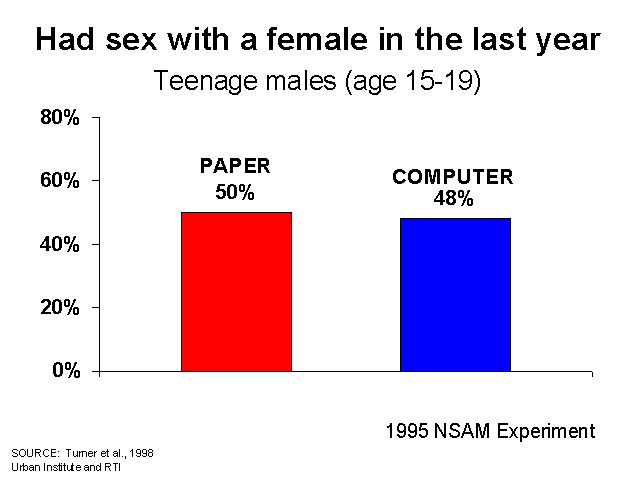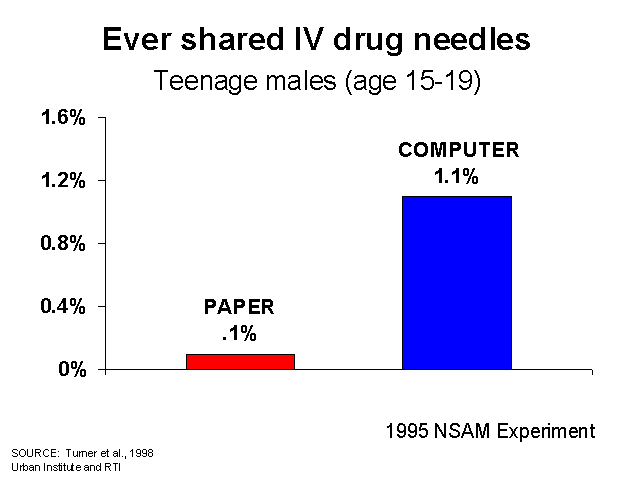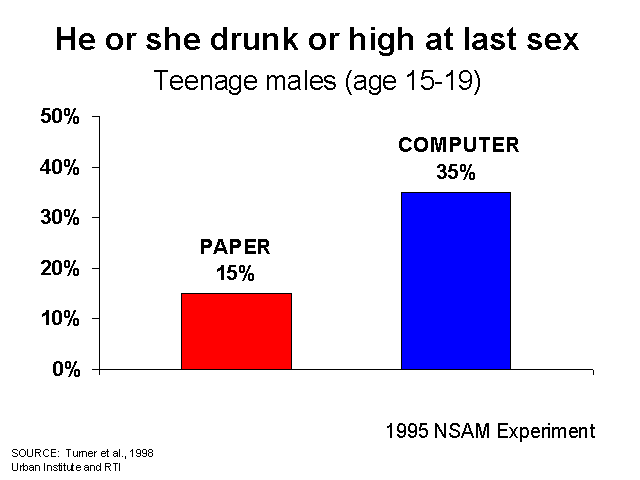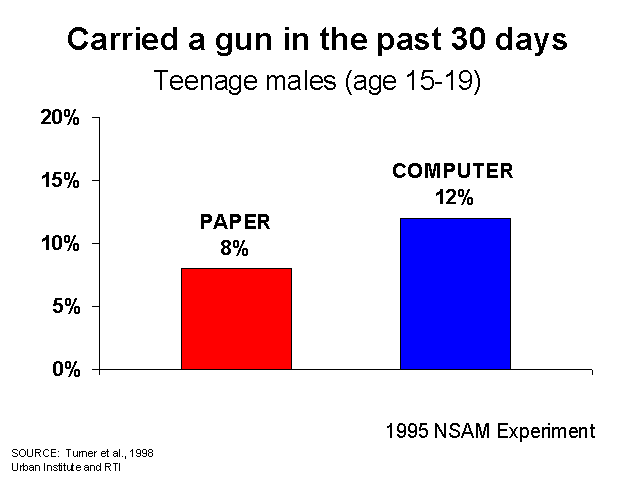|
|
1995 National Survey of Adolescent Males (NSAM)
Document date: May 07, 1998
Released online: May 07, 1998
| Contact: |
Susan Brown, Director of Public Affairs (202) 261-5709 |
1995 National Survey of Adolescent Males (NSAM)
- A nationally representative survey of approximately 1,700 teenage males 15 to 19 years old, conducted across the U.S. in 1995.
- Designed to assess teenage men's risk behaviors related to HIV, sexually transmitted diseases and teen pregnancy.
- An earlier version of this survey was conducted in 1988 to parallel a federal survey of females, the National Survey of Family Growth.
- Parental consent was required for teenagers under age 18.
- Designed and overseen by the Urban Institute. Data collected by Research Triangle Institute (RTI). University of Illinois also collaborates.
- Funded by a grant from the National Institute of Child Health and Human Development, with contributions from the DHHS Office of Population Affairs, National Institute of Mental Health and Centers for Disease Control and Prevention..Audio-CASI Experiment in NSAM
Audio-CASI Experiment in NSAM
- In 1995 we tested a new survey methodology: Audio Computer-Assisted Self Interviews (Audio-CASI). Respondents hear questions through headphones which are connected to a laptop computer and enter responses using the computer keyboard. They can also see the questions on the computer screen.
- To test the effect of this new survey technology, about four-fifths of the NSAM respondents were randomly assigned to answer questions using Audio-CASI, while the other fifth used the traditional method, a paper questionnaire in which they read the questions and write answers.
- For both Audio-CASI and the paper questionnaire, respondents were told that their responses would be confidential. The interviewer did not see or hear their responses in either case.
- The following graphs illustrate some of the key findings. For some very sensitive behaviors, Audio-CASI elicited greater responses than the paper method. In less sensitive behaviors, there was little difference.




Topics/Tags: Related PublicationsOther Publications by the Authors
Usage and reprints: Most publications may be downloaded free of charge from the web site and may be used and copies made for research, academic, policy or other non-commercial purposes. Proper attribution is required. Posting UI research papers on other websites is permitted subject to prior approval from the Urban Institute—contact [email protected].
If you are unable to access or print the PDF document please contact us or call the Publications Office at (202) 261-5687.
Disclaimer: The nonpartisan Urban Institute publishes studies, reports, and books on timely topics worthy of public consideration. The views expressed are those of the authors and should not be attributed to the Urban Institute, its trustees, or its funders. Copyright of the written materials contained within the Urban Institute website is owned or controlled by the Urban Institute. |
|
|

